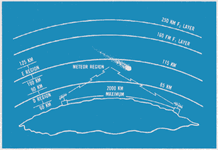- Messages
- 10
- Reactions
- 17
HAM has the mot possibility's lots of repeaters,many are linked together making for long distance on VHF or UHF. some repeaters are solar powered. On HF 6 - 160 meters is good for long range = most anywhere on the planet is possible. Some work better at night and some better in daylight. Some hams bounce signals off the moon back to earth. Just putting in my 2 cents worth












